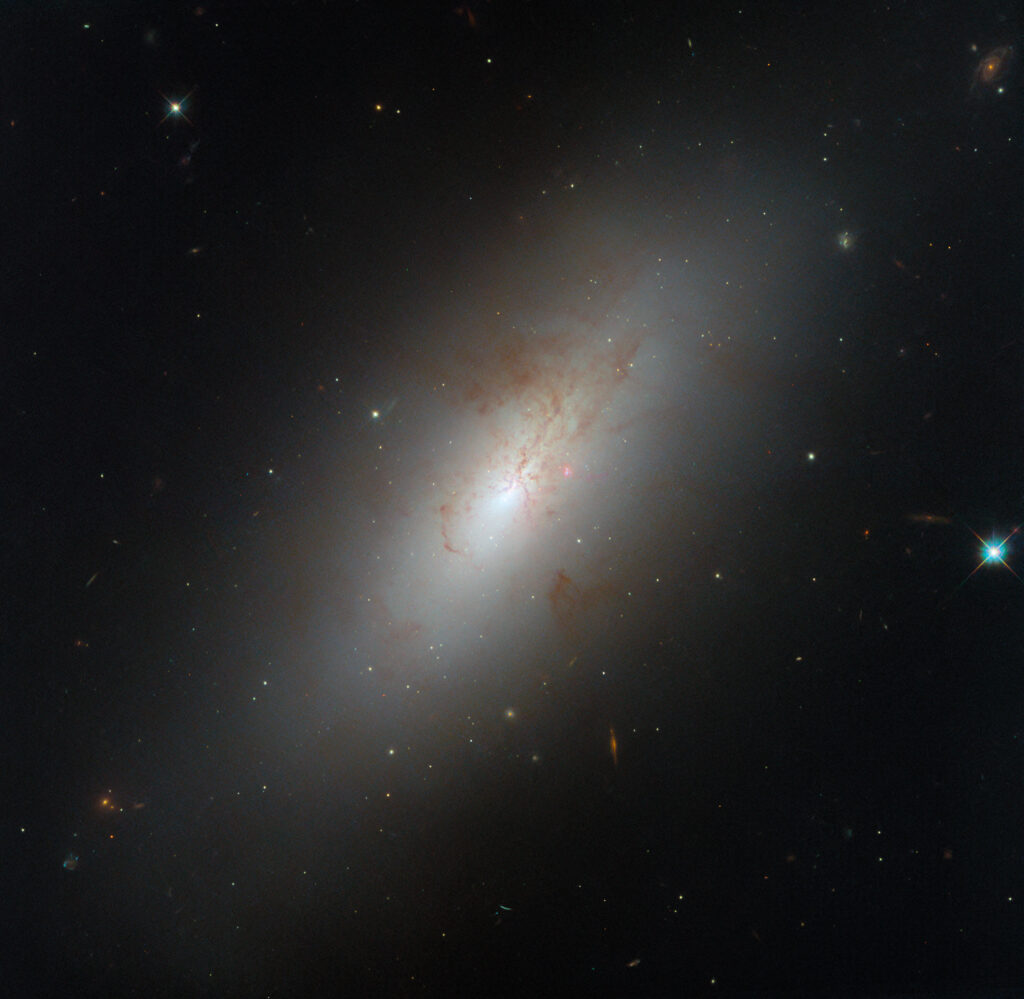Astronomers working with the Hubble telescope have published a new image. It shows the galaxy NGC 4694, which belongs to a rather rare intermediate type.

Most galaxies in the Universe belong to one of two easy-to identify types. On the one hand, there are spiral galaxies like our Milky Way. They are young, energetic, and have spiral arms that contain hot, bright stars. These galaxies also have the gas reserves necessary for the formation of new stars.
At the other end of this scale are elliptical galaxies. They have a homogeneous spherical structure without any distinguishing features. Unlike spiral galaxies, elliptical galaxies are populated by older red stars. They also contain almost no gas reserves — this means that no more new stars are born in them. Such structures can be metaphorically called “space retirees”.
Between these two cosmic opposites exists an intermediate link: galaxies, which combine features of both spiral and elliptical galaxies. They are called lenticular galaxies. Such a galaxy, designated NGC 4694, is captured in this Hubble image
NGC 4694 is 54 million light-years from Earth. It is part of the Virgo cluster. As the photo illustrates, it is disk-shaped — but without any sign of spiral arms and, as in elliptical galaxies, few new luminaries are forming in it. At the same time, the stellar population of NGC 4694 is still relatively young. New stars are still actively forming in its core. The galaxy is also filled with gas and dust, which forms chaotic structures, indicating some kind of disturbance.
The source of these disturbances may be the neighboring dwarf galaxy VCC 2062. Astronomers found that NGC 4694 is surrounded by a cloud of hydrogen. It forms a kind of “bridge” that extends to VCC 2062. In fact, the larger galaxy is stealing gas from its companion. This allows it to fight a “midlife crisis” and retain a younger appearance.
Earlier we told you about how the James Webb Telescope discovered a distant galaxy that would provide a better understanding of how the evolution of the Universe took place.
According to Esahubble


